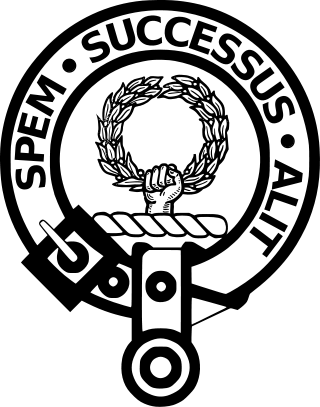
Clan Ross is a Highland Scottish clan. The original chiefs of the clan were the original Earls of Ross.

Eilean Donan is a small tidal island situated at the confluence of three sea lochs in the western Highlands of Scotland, about 1 kilometre from the village of Dornie. It is connected to the mainland by a footbridge that was installed early in the 20th century and is dominated by a picturesque castle that frequently appears in photographs, film and television. The island's original castle was built in the thirteenth century; it became a stronghold of the Clan Mackenzie and their allies, the Clan MacRae. In response to the Mackenzies' involvement in the Jacobite rebellions early in the 18th century, government ships destroyed the castle in 1719. The present-day castle is Lieutenant-Colonel John Macrae-Gilstrap's 20th-century reconstruction of the old castle.
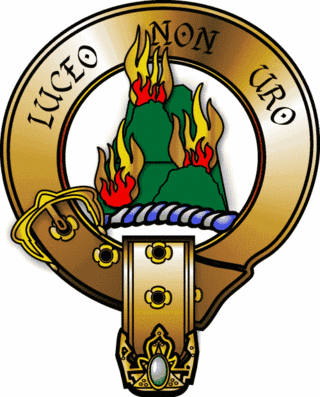
Clan Mackenzie is a Scottish clan, traditionally associated with Kintail and lands in Ross-shire in the Scottish Highlands. Traditional genealogies trace the ancestors of the Mackenzie chiefs to the 12th century. However, the earliest Mackenzie chief recorded by contemporary evidence is Alexander Mackenzie of Kintail who died some time after 1471. Traditionally, during the Wars of Scottish Independence, the Mackenzies supported Robert the Bruce, but feuded with the Earls of Ross in the latter part of the 14th century. During the 15th and 16th-centuries the Mackenzies feuded with the neighboring clans of Munro and MacDonald. In the 17th century the Mackenzie chief was made Earl of Seaforth in the peerage of Scotland. During the Scottish Civil War of the 17th century the Mackenzies largely supported the Royalists. During the Jacobite rising of 1715 the chief and clan of Mackenzie supported the Jacobite cause. However, during the Jacobite rising of 1745 the clan was divided with the chief, Kenneth Mackenzie, Lord Fortrose, supporting the British-Hanoverian Government and his relative, George Mackenzie, 3rd Earl of Cromartie, supporting the Jacobites.
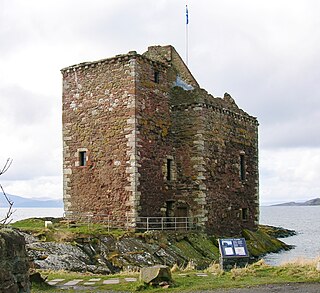
Portencross Castle, also known historically as Portincross Castle, is situated in Portencross, on the west coast of Scotland, about 3 km from West Kilbride. The site has been fortified since the 11th Century. The present tower castle is thought to date from the mid-14th Century and later. It remained in use until it was unroofed by a great storm in 1739 and gradually became ruinous. The castle was designated as a scheduled ancient monument in 1955.
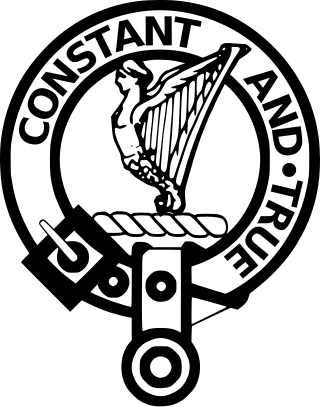
Clan Rose is a Scottish clan of the Scottish Highlands.

Castle Chanonry of Ross, also known as Seaforth Castle, was located in the town of Fortrose, to the north-east of Inverness, on the peninsula known as the Black Isle, Highland, Scotland. Nothing now remains of the castle. The castle was also known as Canonry or Chanonrie of Ross, the former county.
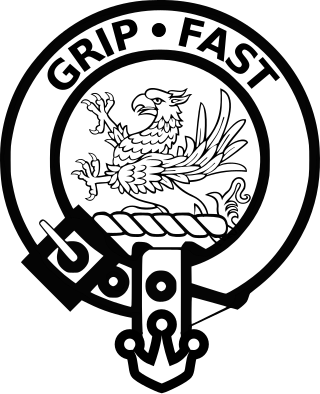
Clan Leslie is a Lowland Scottish clan. The progenitor of the Clan, Bartolf, was a nobleman from Hungary, who came to Scotland in 1067. He built a castle at Lesselyn, from which the clan name derives.

Milntown Castle was an early 16th-century castle which was situated near Milton, in Easter Ross, in the Scottish Highlands.
Robert Mor Munro, 15th Baron of Foulis, and 18th chief of the Clan Munro was a 16th-century Scottish chief. He was known as Robert Mor on account of his large stature. He was the eldest son of Robert Munro, 14th Baron of Foulis. Although this Robert Munro is traditionally 15th Baron and 18th overall chief of the clan, he is only the 8th Munro chief that can be proved by contemporary evidence.
Colin Mackenzie of Kintail, nicknamed "Cam", was a Highland chief of the Scottish clan Mackenzie who greatly increased his ancestral estates through royal favour and a career of vigorous self-aggrandisement.

Dingwall Castle was a medieval fort and royal castle in the town of Dingwall, eastern Ross-shire, Scotland.
Renfrew Castle was situated at the royal burgh of Renfrew, Scotland, which is near the confluence of the River Clyde and the River Cart. The original 12th-century castle was built by Walter fitz Alan, Steward of Scotland, upon a river islet known as the King's Inch. This was replaced in the 13th century with a new castle by the road to the Clyde ferry, which became a royal castle under King Robert II. In the 15th century, the King's Inch site was rebuilt as Inch Castle by Sir John Ross. Both castles were demolished in the 18th century and nothing remains above ground at either site.

Dunduff Castle is a restored stair-tower in South Ayrshire, Scotland, built on the hillside of Brown Carrick Hills above the Drumbane Burn, and overlooking the sea above the village of Dunure.

Redcastle, historically known as Edirdovar and Ederdour, is a medieval castle in Killearnan on the Black Isle, northern Scotland. It is so named from the colour of the stone of which it is built. The castle is now in a state of ruinous disrepair, although it is protected as a category B listed building.
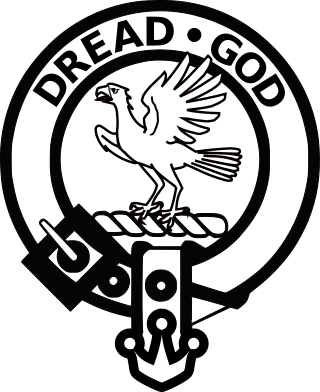
Clan Munro is a Highland Scottish clan. Historically the clan was based in Easter Ross in the Scottish Highlands. Traditional origins of the clan give its founder as Donald Munro who came from the north of Ireland and settled in Scotland in the eleventh century, though its true founder may have lived much later. It is also a strong tradition that the Munro chiefs supported Robert the Bruce during the Wars of Scottish Independence. The first proven clan chief on record however is Robert de Munro who died in 1369; his father is mentioned but not named in a number of charters. The clan chiefs originally held land principally at Findon on the Black Isle but exchanged it in 1350 for Estirfowlys. Robert's son Hugh who died in 1425 was the first of the family to be styled "of Foulis", despite which clan genealogies describe him as 9th baron.
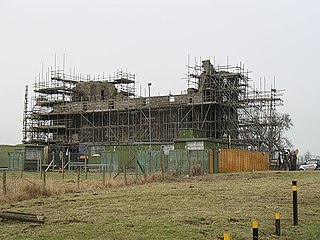
Duntarvie Castle is a ruined Scots Renaissance house in West Lothian, Scotland. It is located 1.5 kilometres (0.93 mi) north of Winchburgh and 9 kilometres (5.6 mi) east of Linlithgow, close to the M9 motorway. Constructed in the late 16th century, the building has been undergoing restoration since the 1990s. The house is protected as a category A listed building, and a scheduled monument.

Mount Kilcoy is a rural locality in the Somerset Region, Queensland, Australia. In the 2021 census, Mount Kilcoy had a population of 277 people.
Farquhar Macrae (1580-1662) was a Scottish minister in the parishes of Gairloch and Kintail, Ross and Cromarty. He is known for the cultural improvement he brought to the north of Scotland in the seventeenth century.

Fairburn Tower is a recently restored Scottish castle near Inverness and Muir of Ord in the parish of Urray.
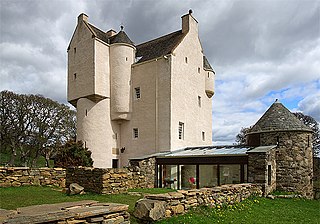
Muckrach Castle, also known as Muchrach or Muckerach Castle, is a tower house near the Scottish town of Dulnain Bridge in the Highland council area, which is part of the Cairngorms National Park. It was built in 1598 as the original seat of Grants of Rothiemurchus, with timber used as part of the stone walls. It was unroofed in 1739 and remained ruinous until the 20th century. In 1971 the building was added to the Scottish monument lists in the highest monument category A, before being restored by the architect Ian Begg in 1978–85. It is since used as a holiday apartment.

















